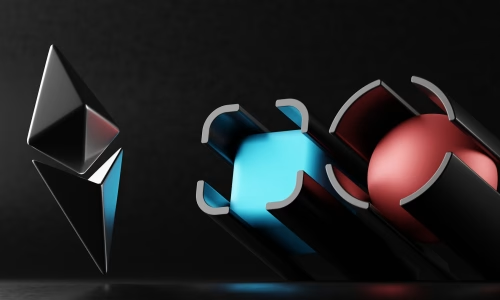Ethereum: Unlocking the Potential of Blockchain with Smart Contracts
Introduction
While Bitcoin introduced the world to the concept of decentralized digital currency, Ethereum has taken blockchain technology to new heights by enabling programmable applications through smart contracts. Created by Vitalik Buterin in 2015, Ethereum is a decentralized platform that allows developers to build and deploy decentralized applications (DApps) using its native cryptocurrency, Ether (ETH). This revolutionary approach has expanded the possibilities of blockchain beyond simple transactions, paving the way for a wide range of innovative use cases.

What is Ethereum?
Ethereum is a decentralized, open-source blockchain platform designed to support the creation and execution of smart contracts and decentralized applications. Unlike Bitcoin, which primarily functions as a digital currency, Ethereum provides a versatile platform where developers can build and deploy various applications without the need for a centralized authority.
Vitalik Buterin, a Russian-Canadian programmer, proposed Ethereum in late 2013 with the goal of creating a more versatile blockchain platform. Ethereum officially launched in July 2015, and since then, it has grown to become the second-largest cryptocurrency by market capitalization, attracting a vibrant community of developers and innovators.
Smart Contracts: The Game Changer
Smart contracts are self-executing contracts with the terms of the agreement directly written into code. These contracts automatically execute and enforce the terms of an agreement when predefined conditions are met, eliminating the need for intermediaries and reducing the risk of fraud.
Smart contracts are the cornerstone of Ethereum’s innovation, enabling a wide range of applications across various industries:
- Finance: Decentralized Finance (DeFi) applications offer financial services such as lending, borrowing, and trading without traditional banks.
- Supply Chain Management: Smart contracts enhance transparency and efficiency by automating and verifying transactions across the supply chain.
- Gaming and Entertainment: Developers create games and virtual worlds where in-game assets and interactions are governed by smart contracts.
- Real Estate: Property transactions and ownership records can be managed and verified through smart contracts, reducing paperwork and increasing transparency.
Ethereum Virtual Machine (EVM)
The Ethereum Virtual Machine (EVM) is a decentralized computing environment that runs smart contracts. The EVM enables developers to write and deploy code on the Ethereum network using programming languages like Solidity. It ensures that smart contracts execute exactly as programmed, without the possibility of downtime, censorship, fraud, or third-party interference.
The EVM’s ability to execute arbitrary code has led to the creation of a diverse ecosystem of DApps, ranging from financial services to social networks, all running on the Ethereum blockchain.
Decentralized Applications (DApps)
Decentralized applications, or DApps, are applications that run on a blockchain network rather than a centralized server. Ethereum’s support for smart contracts makes it an ideal platform for building DApps, which can operate without a central point of control and are often governed by their users.
Some popular DApps on the Ethereum network include:
- Uniswap: A decentralized exchange for trading cryptocurrencies without intermediaries.
- MakerDAO: A decentralized lending platform that allows users to borrow and lend digital assets.
- Cryptokitties: A blockchain-based game where players can collect, breed, and trade virtual cats.
Challenges and Future of Ethereum
Current Challenges:
- Scalability: The Ethereum network can handle a limited number of transactions per second, leading to congestion and high transaction fees during periods of high demand.
- Energy Consumption: Similar to Bitcoin, Ethereum’s current Proof-of-Work (PoW) consensus mechanism requires significant computational power and energy.
Future Developments:
- Ethereum 2.0: A major upgrade designed to address scalability and energy efficiency. Ethereum 2.0 will transition the network from PoW to Proof-of-Stake (PoS), significantly reducing energy consumption and increasing transaction throughput.
- Layer 2 Solutions: Technologies like rollups and sidechains aim to improve scalability by processing transactions off the main Ethereum chain.
Conclusion
Ethereum has revolutionized the blockchain space by introducing smart contracts and enabling the development of decentralized applications. Its versatile platform has inspired a wave of innovation, transforming industries and creating new possibilities for decentralized technologies.
As Ethereum continues to evolve with upgrades like Ethereum 2.0, it promises to overcome current challenges and unlock even greater potential for blockchain applications. The future of Ethereum is bright, with its impact on the digital economy likely to grow as more developers and businesses embrace its capabilities.









